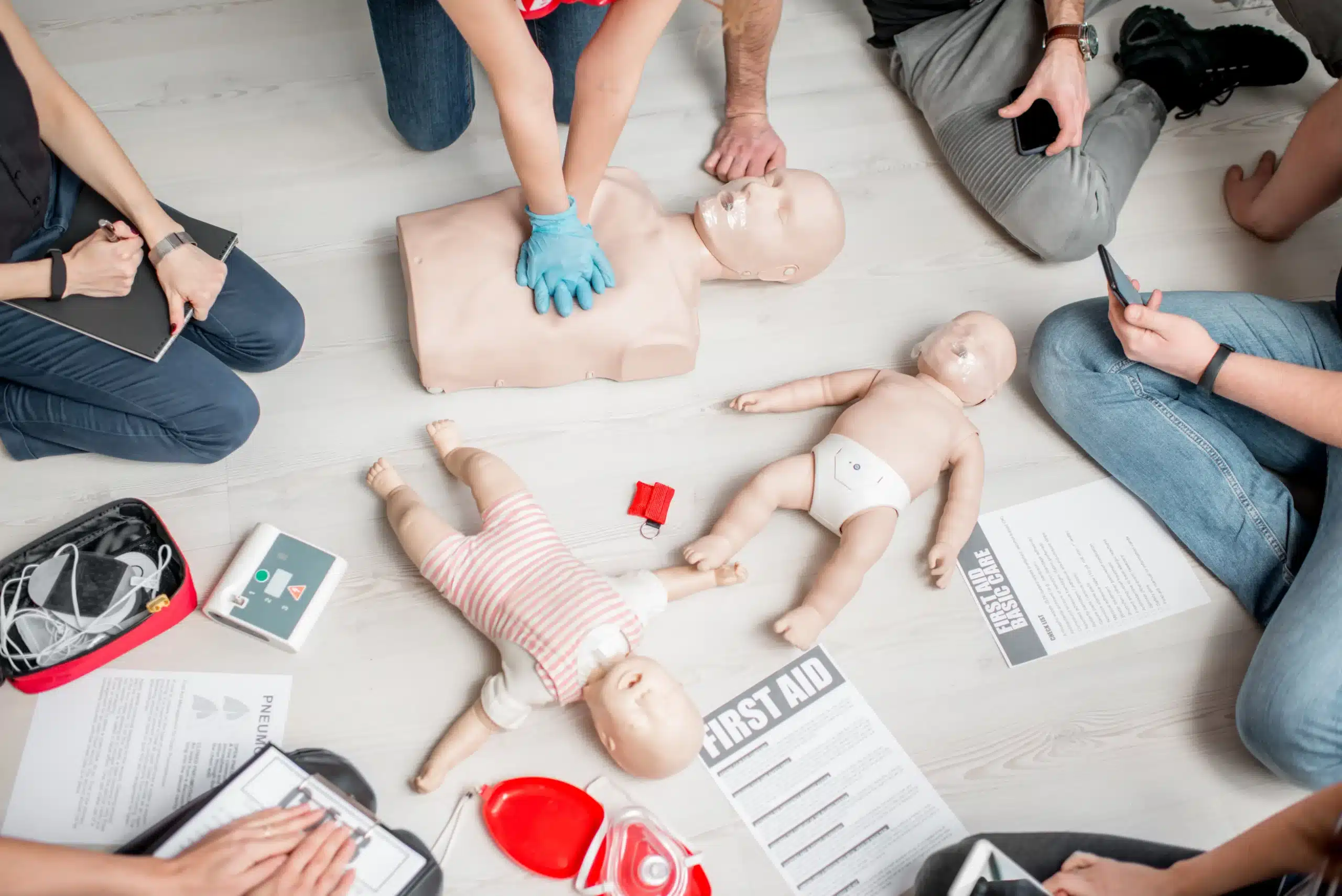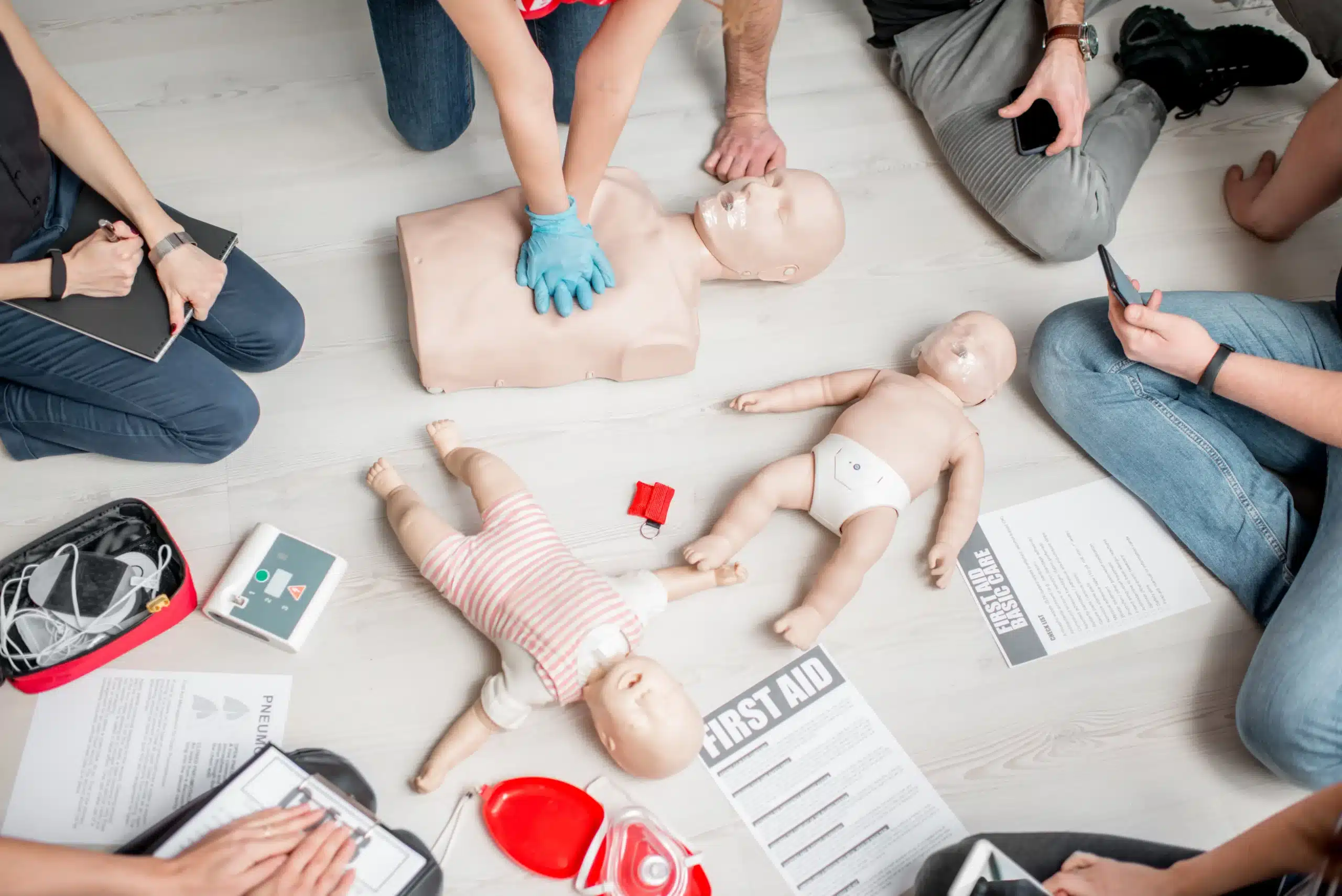When someone’s heart stops, every second counts. Cardiopulmonary resuscitation (CPR) is a critical intervention that can mean the difference between life and death. This life-saving procedure isn’t just vital for healthcare professionals—it’s a universal skill everyone should understand. Whether you’re a nurse in a hospital or a bystander at a park, CPR empowers you to act in emergencies, bridging the gap between crisis and advanced medical care.
This blog explores CPR’s role in healthcare, its history, and steps to becoming certified. You’ll also discover the common myths surrounding CPR and why they need debunking. By the end, you’ll understand why learning CPR is not optional but essential.
Key Takeaways
- CPR is vital for healthcare workers and the general public alike.
- Proper training and certification can make all the difference in saving a life.
- Myths about CPR should not stop anyone from acting in an emergency.
What Is CPR and Its Role in Healthcare
CPR (Cardiopulmonary Resuscitation) is an emergency procedure designed to save lives during cardiac or respiratory arrest. It involves a combination of manual chest compressions and rescue breaths to maintain circulation and oxygen flow to the brain and vital organs.
How Does CPR Work?
- Chest Compressions: You press down on the chest to simulate the heart pumping, maintaining blood flow.
- Rescue Breaths: You breathe into the person’s mouth, delivering oxygen to keep organs functioning.
Why Is It Important?
The main goal of CPR is to buy time. By administering chest compressions and breaths, you prevent brain death until professional medical help arrives. Whether in a hospital, at home, or in public, CPR can save lives during emergencies like heart attacks, drowning, or choking.
The History of CPR
Early Developments
The roots of CPR trace back to the 18th century when methods like mouth-to-mouth resuscitation were first tested on drowning victims.
Milestones in CPR
- 1950s – Mouth-to-mouth resuscitation became widely accepted.
- 1960s – Doctors introduced chest compressions and developed modern CPR techniques.
- 1970s – The American Heart Association (AHA) created official CPR guidelines to standardize training.
Over the years, CPR has evolved through scientific advancements, making it safer and more effective.
Importance of CPR in Saving Lives
Every year, sudden cardiac arrests claim hundreds of thousands of lives. Most of these events occur outside hospitals, where immediate medical help may be unavailable.
The Role of CPR in Survival
- Bystander CPR: Studies show that when a bystander performs CPR, it can double or even triple the chances of survival.
- Chain of Survival: CPR is a critical link in the “chain of survival,” which includes recognizing cardiac arrest, early CPR, rapid defibrillation, and advanced care.
These interventions are most effective within the first few minutes, highlighting the importance of widespread CPR knowledge.
The Role of Healthcare Professionals in CPR
Healthcare workers play a pivotal role in emergencies. For nurses, doctors, paramedics, and hospital administrators, CPR competency isn’t optional—it’s mandatory.
Why is Training Critical?
- Regular training ensures they’re prepared to act efficiently.
- Certifications like Basic Life Support (BLS) and Advanced Cardiac Life Support (ACLS) ensure healthcare providers meet the highest standards.
Even non-medical staff in hospitals can benefit from CPR skills, creating a safer environment for everyone.
CPR Training and Certification
How to Become Certified
Getting certified is straightforward. Organizations like the American Heart Association (AHA) offer courses tailored to both healthcare professionals and the public.
Types of Certification
- Basic Life Support (BLS) focuses on CPR for healthcare workers.
- Advanced Cardiovascular Life Support (ACLS) and Pediatric Advanced Life Support (PALS) focus on advanced techniques.
- CPR & First Aid covers skills for general public or non-medical individuals.
A typical training course lasts 4-6 hours and includes hands-on practice.
Why You Should Get Certified
Knowing CPR isn’t just about helping others—it gives you the confidence to act in emergencies. Imagine being able to save a friend, colleague, or family member.
Debunking Myths About CPR
Misconceptions about CPR prevent people from stepping in during emergencies. Here’s the truth about common myths:
- Myth 1: “Only trained professionals should perform CPR.”
- Reality: Even imperfect CPR is better than no action. Doing something can save a life.
- Myth 2: “I might hurt the patient.”
- Reality: While it’s possible to cause minor injuries like a cracked rib, survival outweighs these risks.
- Myth 3: “CPR always brings people back to life immediately.”
- Reality: CPR buys time until advanced care arrives—it doesn’t guarantee immediate recovery.
Why Addressing Myths Matters
Debunking these misconceptions encourages more people to step in and help during emergencies.
Save Lives—Get Certified Today
If you’re not CPR-certified, now is the time to act. Organizations like Safety Training Seminars offer credible AHA courses in Walnut Creek like CPR & First Aid, BLS, PALS, and ACLS.
Healthcare professionals, ensure your entire team is up to date on their training. Together, we can build a community that’s ready to act when it matters most.
Take the first step. Sign up for a CPR class today.






